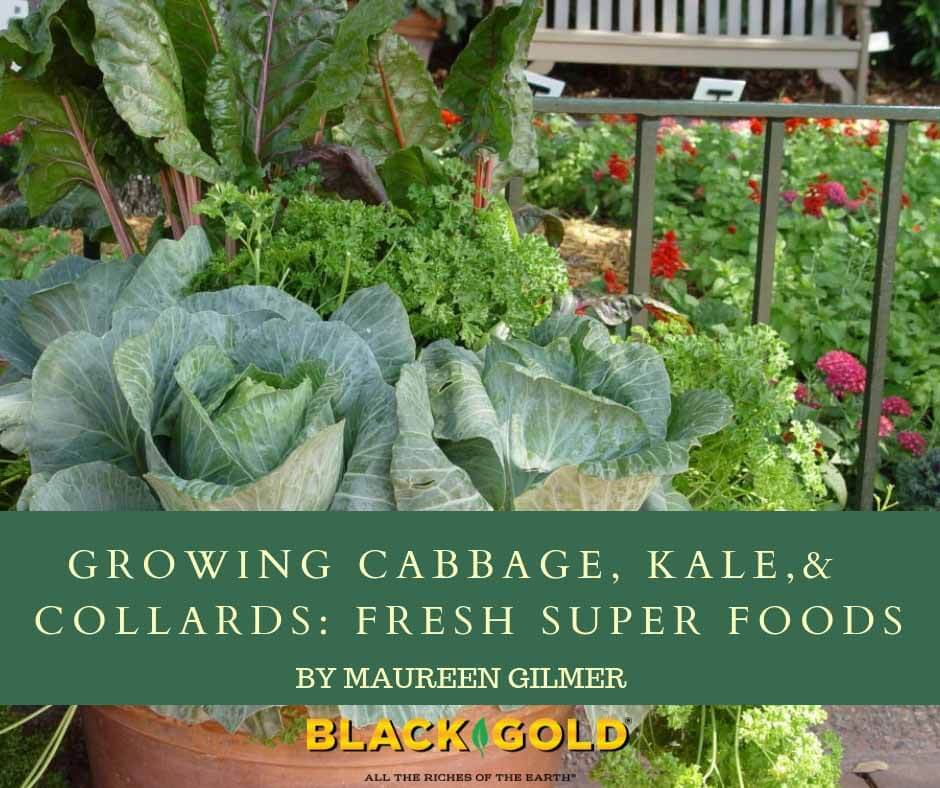
Until recently, collard greens were known only in the South and among African Americans who brought this “soul food” into northern cities during the Great Migration a century ago. Today collards and kales are heralded as “fresh super foods” due to the high nutritional value of these large-leaved members of the cabbage family. These “pot greens” are eaten stewed, steamed, or wilted for a quick healthy meal.

Brassica is a genus with dozens of variants, most being from the original species, Brassica oleracea. Among them are cauliflower and broccoli, Brussels sprouts, and collard greens. Such close relations mean virtually all of them are grown the same way in western gardens.
Let back-to-school ornamental kale and cabbage displays in the grocery store be your reminder that it is Brassica season. August is the time to start your fall and winter garden, which can feed a family with healthy greens even after frost sets in. If row covers are used, plants can remain productive despite significant late-fall cold inland and at higher elevations. The key is sowing your brassicas while it’s warm enough stimulate good germination and maturation of seedlings, indoors or out.
Start Them Indoors
Brassicas can best be grown from seed sown indoors in advance while conditions are too warm to plant outdoors. Time their indoor planting so they’re ready to plant out into the garden when temperatures cool off in September. Seed germinates best between 65 to 75º F but will sprout at lower temperatures, though it may take more time.

Sow the small seeds in Black Gold Seedling Mix with RESiLIENCE® to provide a clean, moisture-holding media for optimal germination. After the seedlings germinate, carefully move them to individual pots of Black Gold Moisture Supreme Potting Soil with RESiLIENCE®. Be careful transplanting these vegetables because damage to stems can introduce unwanted disease.
Sow Them in the Ground
Cabbage family greens also germinate nicely out in the garden while the soil is warm. It’s an old custom to cover seedbeds in wet burlap on hot dry days to keep them moist and shaded during germination. Some gardeners create shade covers to aid seedling development.

If you grow a “mess of greens”, it’s enough to feed a family for months since leaves are cut while the plant lives on to make more foliage. A big pile of leaves lose a lot of volume in the cooking process, so don’t underestimate the numbers of plants needed. Err on the side of overdoing it. Space the plants as stipulated on the seed packet since these will be very large at maturity.
Recondition soil before you introduce your Brassica seeds or seedlings into the garden. The ground may be depleted by summer crops, so it’s important to boost fertility. Greens depend on nitrogen, the nutrient responsible for stem and leaf development in plants. Make sure you fork in Black Gold Garden Compost Blend before planting.
Grow Them in Pots
 Flowering cabbage, yet another Brassica, is often grown in pots with annual flowers for winter gardens. This demonstrates how well-adapted leafy greens are to pots and troughs on your porch, patio or deck. Blend your greens with violas and calendulas, both easy-to-grow cool-season annual flowers with edible blossoms.
Flowering cabbage, yet another Brassica, is often grown in pots with annual flowers for winter gardens. This demonstrates how well-adapted leafy greens are to pots and troughs on your porch, patio or deck. Blend your greens with violas and calendulas, both easy-to-grow cool-season annual flowers with edible blossoms.
Too many Americans have grown up without ever tasting real “pot greens”, but when picked fresh their rich sweet flavor will soon become a family favorite. (Keep in mind that most greens actually tastes better after it’s exposed to frost!) What’s even more surprising is it takes less than an hour to harvest and cook greens into a healthy, garden-fresh meal. That makes it a time saver that doesn’t sacrifice nutrition.
This year, grow a wide range of these super foods in your fall and winter garden, so there’s always fresh picked fast food in your kitchen at the end of a busy day.
